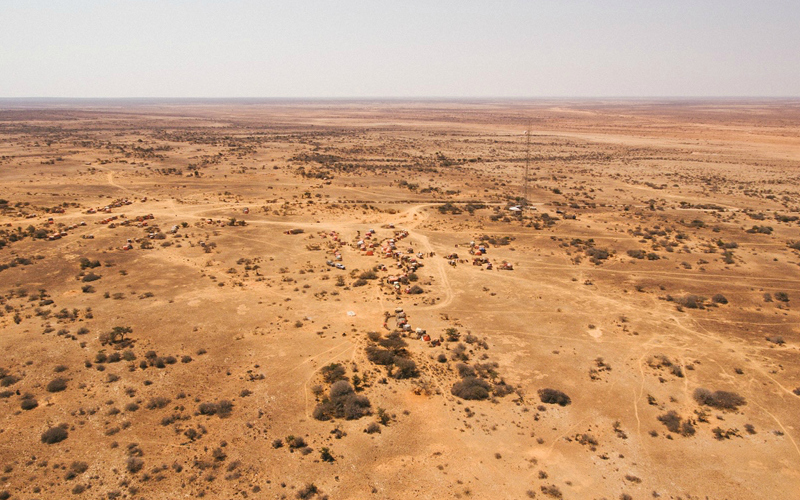Above: Sunset on the road back from the Internal Displacement (IDP) camp in Eyl, Somalia.
By Max Moser
I’ve never seen a place so dry.
I’m travelling in a land cruiser with colleagues from World Vision Somalia, driving a road that’s seen three years of extreme drought. As we slow to a halt, the dust engulfs our vehicle like smoke.
“You have places like this in the U.S.?” asks Mohammud, a nutritionist with the Somali team. He’s been my guide and interpreter during this week-long trip to the Puntland region.
“Kind of,” I say. “There’s a place they call Death Valley.” Though Mohammad chuckles as he translates for the driver, we all see the painful irony of my words.
I’d recently caught my first glimpses of starvation. They were the bodies of dead animals, mostly goats, in various states of decomposition. At first, I thought it was just roadkill, a few unfortunate goats straying from the herd. But there were too many for that to be the case.
Mohammud explained that herdsmen transporting their animals in search of grazing land leave the sick ones along the way. And these days, there are many. Drought doesn’t just kill through dehydration and exhaustion; it erodes the immune system as well.
After a few hours on the road, we arrive at our destination: a camp for Somali people who’ve been displaced within their own country. Some have migrated in search of food. Many were driven from their homes by the ongoing conflict.
The camp is nothing like those a North American might visit during summer vacation. This camp is a cluster of huts made from sticks, bits of tarp, and pieces of garbage. It’s a makeshift community, one which nobody would have chosen if not for the crises they’re facing.
 IDP camp in Eyl, Somalia.
IDP camp in Eyl, Somalia.
But here they’ve come, seeking help for their loved ones, for their children. Half of all the Somali people are in need of immediate, lifesaving, humanitarian assistance. That’s 6 million children, women and men in desperate need. The equivalent number in Canada would be 18 million people.
Three years without rain have scorched the land, killing crops, leaving no food for the people or their herds. Their pastures are empty, as are their stomachs.
We approach families one by one, and they tell us their stories. Most were once pastoralists. They’ve lost most, if not all of their animals. Down to one-tenth of livelihoods they’ve spent lifetimes building up. From a herd of 500 goats, down to 50. And from a herd of 30 camels, down to none at all.
Mohammud tells me that a camel can be worth between US$600 and $1000. These aren’t small losses. They were the families’ only assets: their means of transportation, hauling, trade and family pride, destroyed all at once. There is no insurance policy to replace them. No family members or neighbours have the means to help.
 A family who lost two children due to malnutrition in March.
A family who lost two children due to malnutrition in March.
Of course, it’s not just the livelihoods that are dying. At the camp, I meet families who’ve lost children due to malnutrition or illness. It’s estimated that 1.4 million children in this country will suffer acute malnutrition this year. Their young bodies simply aren’t equipped to withstand what they’re facing.
It dawns on me that this is how starvation works: slowly stripping away at a community until nothing is left. A few days later, in a different camp, a woman will recount her story and lament, saying, “Our situation needs action, it doesn't need talking...we are afraid that we will die before we get assistance.”

A woman and her child in World Vision-built housing in Puntland, Somalia. This mother has had to take in 19 other family members due to the drought.
In my travels elsewhere, I often end my interviews by asking people “Do you think it’s possible for the world to be hunger free?” The answers are varied and interesting. But here in Somalia, I can’t bring myself to ask.
In a place that has just escaped famine, asking people to dream about a hunger-free world seems absurd. So I phrase things a different way: “What do you hope and pray for in the future?”
Many say the same thing. “We pray for rain.”